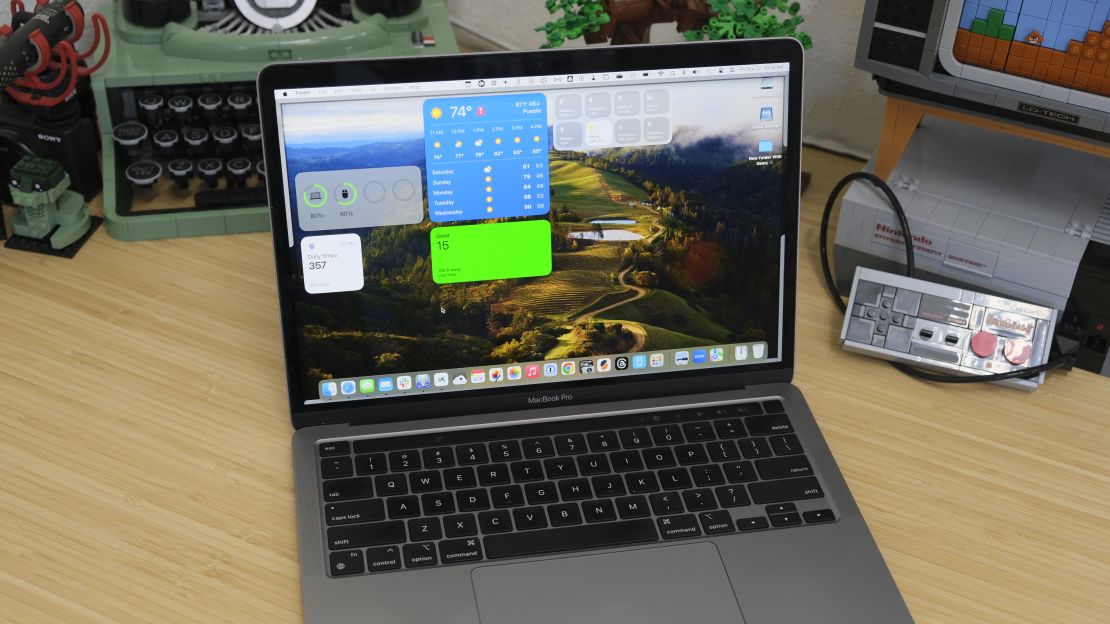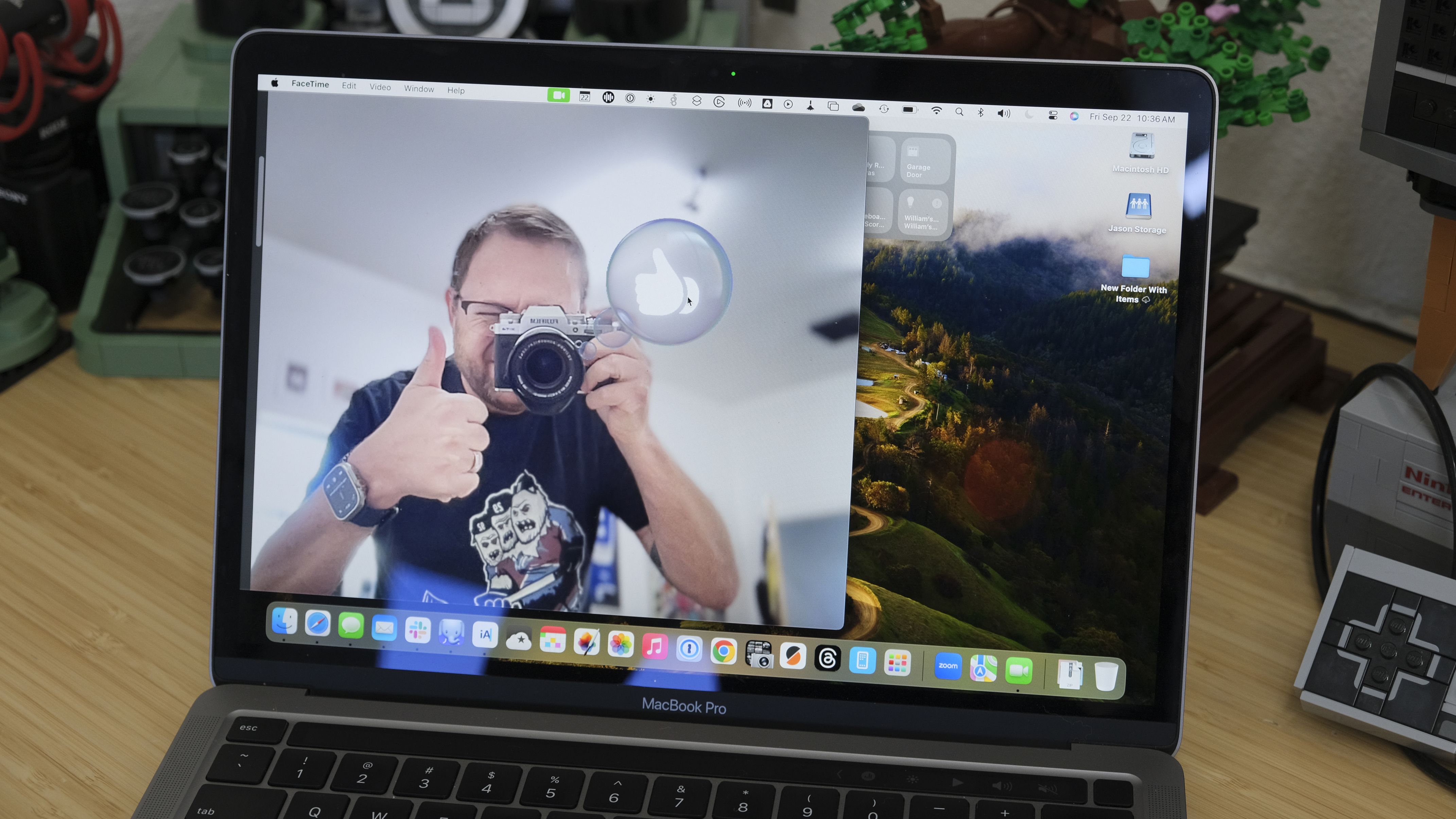MacOS Sonoma, Apple’s latest software update for the Mac, is officially available to download for those with a compatible Mac. The update brings several new features and improvements to the Mac, including the ability to add widgets to your desktop, improved video conferencing features and new slow-motion screensavers.
Previously, I shared my early thoughts about Sonoma when the public beta launched in July, and with the official launch now upon us, it’s worth revisiting the new features and the age-old question: Should you upgrade?
Spoiler alert: Yes.
Which Macs work with macOS Sonoma?
MacOS Sonoma is available on the following Macs: iMac 2019 and later, Mac Pro 2019 and later, iMac Pro 2017 and later, Mac Studio 2022 and later, MacBook Air 2018 and later, Mac mini 2018 and later, and MacBook Pro 2018 and later.
Widgets on the desktop are downright amazing
By far my favorite and most used feature in macOS Sonoma is the ability to add widgets to the desktop. Not only can I view widgets with snippets of information, but just like in iOS 17, the Mac’s widgets are now interactive. That means I can check an item off my daily task list without opening Fantastical, or control a light via the Home app just by clicking on its tile.
Indeed, widgets on the Mac aren’t new. You’ve been able to add them to the Notification Center that you have to manually open every time you want to view them.
But starting in macOS Sonoma, and this is probably my favorite part, all of your open app windows will immediately fly off the screen to reveal your desktop and your widgets with a single click.
After updating to Sonoma, I admittedly found this feature a bit jarring at first. I didn’t realize how often I clicked on the desktop for no real reason. I kept getting annoyed. Eventually, my habits changed and now I purposely click on the desktop to view my widgets, be it my calendar, the weather or even the Find My app.

To add widgets to your Mac’s desktop, you can either drag and drop the widgets you already have added in the Notification Center, or right-click on the desktop and select “Edit Widgets.” You’ll see a list of apps with available widgets, including apps that are installed on your iPhone that have widgets. Your iPhone will need to be near your Mac and connected to the same Wi-Fi network for them to show up.
You can place widgets you drag out of the picker anywhere on your desktop, with any other widgets, files or folders automatically moving.
I’ve added several widgets from my iPhone to my desktop, such as the air quality monitoring app Paku and Carrot Weather. When you click on a widget from iPhone apps without any interactive aspects, such as the Carrot weather app, you’re prompted to open the respective app on your iPhone. Other widgets, such as adding the iPhone-specific Home widget for controlling your smart home devices, are completely interactive just like a native Mac widget. It’s insanely cool to have so many widget options without losing any of the core functionality that makes them so great across Apple’s latest software updates.
The first thing you should do after upgrading to Sonoma is add widgets and start messing with them.
New video conferencing features are welcome
Like many of us, I’ve spent my fair share of time on video calls over the last few months, which has given me ample time to test out some of macOS Sonoma’s new video conferencing prowess. There’s a new Reactions feature that lets you use hand gestures to trigger animations during a call. For instance, if you present a thumbs-up to the camera, your Mac will show an animated thumbs-up. You can also make a heart shape with your hands to trigger animated hearts floating up and off your screen.

There are several gestures, some of which I’ve found are easy to accidentally trigger. On more than one occasion while scratching my face I accidentally activated the thumbs-up gesture, which was awkward.
There’s also a Portrait mode that blurs your background, helpful for messy home offices like mine, and a studio light feature that changes the lighting of your video stream.
Apple also added a new Presenter Overlay feature that allows you to customize the video feed, separating yourself from your background and showing your desktop or presentation as a floating window. I haven’t had a chance to test this particular feature, but it sure looks useful.
Whenever your camera, whether it’s your MacBook’s or an external webcam, is activated, you’ll see a green video icon in the menu bar along the top of your screen. Click on that to view a dropdown menu where you can turn features like Reactions on or off, or even manually trigger one of the animations.
As far as I can tell right now, Zoom and other similar video call services haven’t been updated for Sonoma, but once they do, you’ll be able to use presenter overlay. However, Reactions, Portrait mode and Studio Light are available across all video calling apps.
Other notable improvements and changes
Across all of its latest software updates, including iOS 17, Apple has made a huge effort to improve autocorrect by making it smarter and more proactive than ever. As you begin typing, you’ll notice that autocorrect no longer tries to guess and finish the word you’re writing, but it’ll now try and finish your sentences. If it’s right, stop typing for a brief second and then tap the tab button for it to autocomplete. I had hoped that this feature would get smarter the longer I used it, but I haven’t seen it accurately complete any more sentences than it did back in June when I first started testing it.
One subtle addition I think is going to be a huge hit is Apple’s new animated screensavers with corresponding wallpapers that are just slow-motion videos of a cityscape or landscape.
Once you’ve picked one of the screensavers, every time you wake your Mac and see the login screen, you’ll see a slow-moving video play showing a flying overview of the scene. And then after logging in, your desktop’s wallpaper will be a still image of that same environment. It’s a fun experience every time you wake your Mac.
Of course, there’s plenty more that’s new in macOS Sonoma. For instance, Safari has its fair share of new features like Profiles, private browsing improvements and the ability to create web apps out of any website. And iCloud’s password manager now allows you to share passwords with family and friends.
Bottom line
Should you install macOS Sonoma? I think so. There are plenty of new features, bug fixes and improvements throughout the entire operating system that make it an easy upgrade to recommend. I can’t overstate it enough — widgets on the desktop have completely changed how I use and interact with my Mac and the apps I use daily.
I keep discovering new features the longer I use Sonoma, and I’m sure your experience will be the same.
















